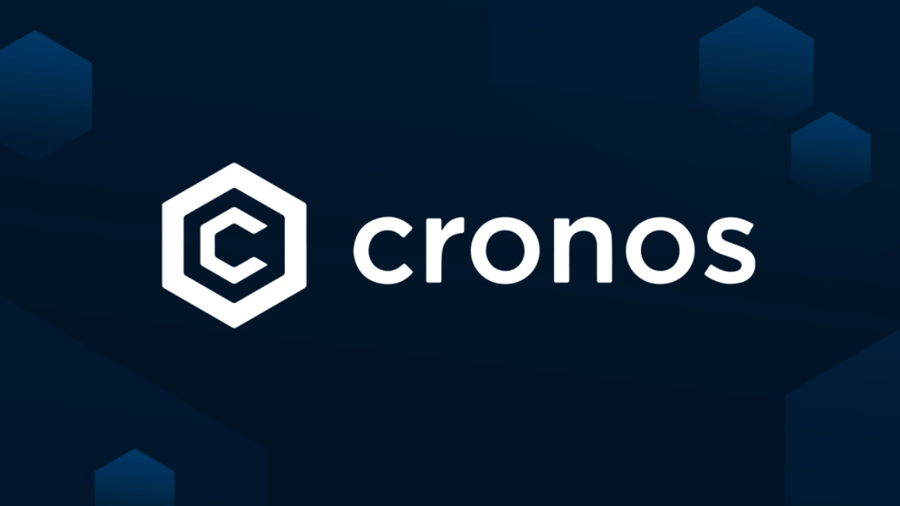Cronos (CRO) trading bots have emerged as essential tools for traders who seek efficiency and precision in the volatile world of cryptocurrency. These automated programs are designed to allow traders to execute trades based on predefined strategies, taking emotions and guesswork out of the equation. As Cronos gains traction, many are looking to leverage these bots to maximize their trading efforts. With the right strategies and tools in place, CRO trading bots can provide traders with a seamless experience that saves time and enhances profitability.
The rise of trading bots in cryptocurrency is not a new phenomenon, but their application in the Cronos ecosystem has brought fresh opportunities. Whether a trader is new to CRO or a seasoned veteran, Argoox recommend you to understand how these bots operate and how to use them effectively can make a significant difference in their trading outcomes.
What is the Role of Cronos (CRO) Trading Bots?
The primary role of Cronos (CRO) trading bots is to automate the buying and selling of Cronos (CRO) tokens based on predefined criteria. These bots operate around the clock, eliminating the need for manual intervention, which is critical in a 24/7 market like cryptocurrency. By analyzing market data and conducting trades at precise moments, they ensure that traders don’t miss out on profitable opportunities or fall victim to poor timing due to human error.
Beyond simple trade execution, these bots can also manage complex strategies, including arbitrage, grid trading, and trend following. Their ability to react instantly to market conditions makes them ideal for traders looking to stay competitive in a fast-moving market.
How Do Cronos (CRO) Trading Bots Work?
Cronos (CRO) trading bots work by connecting to cryptocurrency exchanges through APIs, allowing them to access market data and execute trades. These bots rely on algorithms that process real-time data, such as price movements, volume, and other indicators, to determine the best moments to enter or exit trades.
At the core, a trading bot follows a specific set of instructions or a trading strategy. For example, a bot might be programmed to buy CRO when its price falls to a certain level and sell when it reaches a specified profit margin. The bot’s performance depends heavily on the quality of the strategy, as well as its ability to interpret data accurately and execute trades swiftly.
Benefits of Using Cronos (CRO) Trading Bots
- Automation: Eliminates the requirement of constant manual monitoring of market conditions.
- Efficiency: Bots can process a large amount of data and conduct trades faster than any human trader.
- Consistency: By adhering to a set strategy, bots avoid emotional decisions that can result in losses.
- 24/7 Trading: Bots can operate around the clock, ensuring traders don’t miss out on opportunities, even when they are resting and not monitoring the market.
- Scalability: Managing multiple strategies or assets simultaneously becomes easier with automation.
How Trading Bots are Added Into The Market?
The concept of trading bots originated in traditional stock markets, where automation has been used for decades. In the cryptocurrency market, these bots gained popularity because of the high volatility and 24/7 nature of trading. Early adopters quickly realized the advantage of using bots to track the market and make instant trades without human limitations. As the market matured, trading bots became more sophisticated, offering advanced features like backtesting, real-time data analysis, and customizable strategies.
What are The Best Practices for Running Cronos (CRO) Trading Bots?
- Start Small: Test your bot with a small investment to ensure it operates as expected.
- Regular Updates: Keep your bot updated with market trends and evolving strategies.
- Monitor Performance: Even though bots automate the process, regular monitoring helps identify issues or opportunities for improvement.
- Backtest Strategies: Before deploying a bot, it’s crucial to backtest it using historical data to ensure its effectiveness.
- Diversify: Using different strategies across multiple bots can mitigate risk.
Are Cronos (CRO) Trading Bots Safe to Use?
Cronos (CRO) trading bots are generally safe to use if built and maintained correctly. However, safety also depends on the platform used and the bot’s coding. Always ensure you use secure, reputable exchanges with API access and bots from trusted developers. Additionally, limit the amount of capital you allow your bot to access and regularly update its security settings to prevent unauthorized access or exploitation.
Do Cronos (CRO) Trading Bots Provide Profitability?
Profitability largely depends on the strategies programmed into the bot and market conditions. While bots can help eliminate emotional trading and make quick decisions, they are not guaranteed to make profits. A well-configured bot can enhance profitability by capitalizing on small price movements and trading opportunities, but it also comes with risks. It’s important to run tests, make adjustments, and closely monitor market trends to optimize profitability.
What are The Key Features to Consider in Making a Cronos (CRO) Trading Bot?
- API Integration: Ensure smooth connection with exchanges.
- Customizable Strategies: Flexibility in applying different trading strategies is crucial.
- Real-Time Data Analysis: The ability to process data and make trades instantly.
- Backtesting Capability: Testing the bot on historical data before deploying it live.
- Risk Management: Features like stop-loss and take-profit mechanisms to minimize potential losses.
How to Make a Simple Cronos (CRO) Trading Bot with Code?
Here’s a simplified version of how to make a basic Cronos (CRO) trading bot using Python. This bot will utilize the CCXT library to interact with a cryptocurrency exchange, such as Binance or KuCoin, where CRO is available for trading.
Step-by-Step: Building a Simple Cronos (CRO) Trading Bot
Install Required Libraries
pip install ccxt pandasIn your first step, you need to install the necessary Python libraries:
- CCXT: This library lets you interact with various cryptocurrency exchanges.
- Pandas: Used to manage and analyze data efficiently.
Bot Structure
We’ll create a basic bot that buys CRO when the price dips below a certain threshold and sells when the price rises above another threshold.
Trading Bot Code
import ccxt
import time
import pandas as pd
# Exchange API Keys (use your own API keys here)
api_key = 'your_api_key'
api_secret = 'your_api_secret'
# Initialize the exchange (Example: Binance or KuCoin)
exchange = ccxt.binance({
'apiKey': api_key,
'secret': api_secret,
'enableRateLimit': True
})
# Set your trading pair (CRO/USDT in this case)
symbol = 'CRO/USDT'
# Define parameters for the strategy
buy_threshold = 0.10 # Buy if the price drops below $0.10
sell_threshold = 0.15 # Sell if the price rises above $0.15
trade_amount = 50 # Amount of CRO to buy/sell
def get_price():
"""Function to fetch the latest price of CRO/USDT."""
ticker = exchange.fetch_ticker(symbol)
return ticker['last']
def buy_cro():
"""Place a buy order for CRO."""
order = exchange.create_market_buy_order(symbol, trade_amount)
print(f'Bought {trade_amount} CRO at market price')
def sell_cro():
"""Place a sell order for CRO."""
order = exchange.create_market_sell_order(symbol, trade_amount)
print(f'Sold {trade_amount} CRO at market price')
def run_bot():
"""Main loop to run the trading bot."""
while True:
try:
price = get_price()
print(f'Current price of CRO: {price}')
if price < buy_threshold:
print(f'Price is below {buy_threshold}, buying CRO...')
buy_cro()
elif price > sell_threshold:
print(f'Price is above {sell_threshold}, selling CRO...')
sell_cro()
except Exception as e:
print(f"Error: {str(e)}")
time.sleep(60) # Wait for 60 seconds before checking the price again
# Run the bot
run_bot()Explanation:
- API Setup: You’ll need API keys from the exchange (e.g., Binance) where you trade CRO.
- Get Price: The function get_price() fetches the current CRO price from the exchange.
- Buy/Sell Functions: The buy_cro() and sell_cro() functions place market buy or sell orders for CRO.
- Bot Loop: The run_bot() function continuously checks the CRO price every 60 seconds. It buys CRO if the price drops below the buy threshold and sells if it rises above the sell threshold.
Additional Notes:
- Ensure that you have your API keys from the exchange.
- This bot performs basic market buy and sell orders, but for production use, you should consider adding error handling, logging, and testing with small amounts first.
- Use a real-time data provider or technical analysis for more advanced strategies.
Tools, Libraries, and Technologies Used
- CCXT: A cryptocurrency trading library that connects to various exchanges.
- Python: Commonly used for building bots due to its simplicity and vast library support.
- REST APIs: Used to communicate with cryptocurrency exchanges for trade execution and data fetching.
Can I Create a CRO Trading Bot With Custom Settings?
Yes, custom settings are essential for fine-tuning a trading bot according to your strategies. You can customize aspects such as buy/sell thresholds, stop-loss limits, risk tolerance, and market signals. Customization also allows you to modify the bot to suit different market conditions, ensuring it adapts to various trading scenarios.
What are Different Types of Cronos (CRO) Trading Bots?
- Arbitrage Bots: Benefit from price differences across different exchanges.
- Market-Making Bots: Provide liquidity by placing buy and sell orders around the current price.
- Grid Trading Bots: Create a grid of buy and sell orders to earn more profit from market volatility.
- Trend Following Bots: Execute trades based on market trends and momentum.
Challenges in Building Cronos (CRO) Trading Bots
Building trading bots comes with challenges such as:
- Coding Complexity: Building a robust bot requires coding skills and an understanding of API integration.
- Market Volatility: Bots need to be adaptable to rapidly changing market conditions.
- Security Concerns: Protecting the bot from hacks or malicious attacks is crucial.
Why Is Backtesting the Cronos (CRO) Trading Bot Important?
Backtesting involves testing a bot’s performance using historical market data to ensure its strategy is sound before live deployment. It helps to determine potential weaknesses in the strategy and provides insights into how the bot would have performed in past market conditions. Without backtesting, traders run the risk of deploying a bot that may not perform well in real-time trading.
Conclusion
Cronos (CRO) trading bots offer a powerful tool for traders who want to automate their strategies and gain an edge in the fast-paced cryptocurrency market. While building and running these bots can be complex, the benefits of automation, efficiency, and 24/7 trading far outweigh the challenges. To get started, traders should explore the various types of bots, understand the importance of backtesting, and customize their bots to suit specific trading needs. Argoox provides global AI-powered solutions for traders looking to enhance their performance in cryptocurrency markets, including CRO trading. Visit the Argoox website to explore the next generation of trading bots and take your trading experience to new heights.




